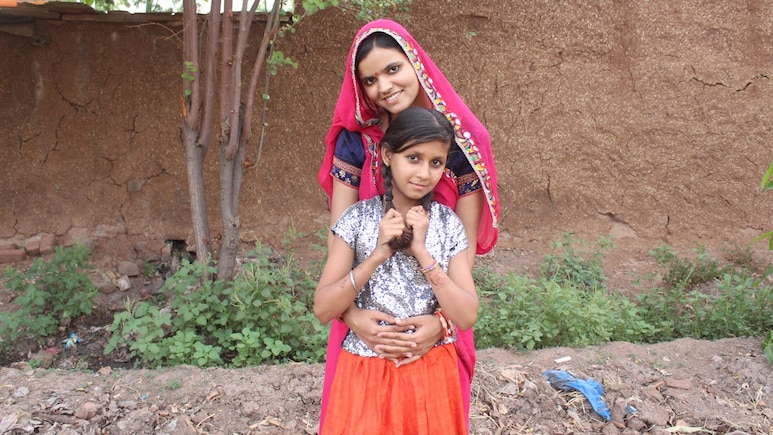
Prime Minister Narendra Modi will launch Swasth Nari Sashakt Parivar Abhiyaan on 17 September 2025, a campaign aimed at strengthening women's and children's health across India, as a part of his 75th birthday celebrations. The announcement was recently made by Union Minister of Health and Family Welfare, JP Nadda, who also highlighted that this campaign will be launched as a part of the government's long-term vision of building a healthier India. The campaign includes thousands of health camps, nutrition-driven awareness, and partnership with local health infrastructure. This campaign is timely because though India has made progress in tackling women's health issues, key indicators show wide disparities across states.
Here is everything you need to know about the announced plans for the Swasth Nari Sashakt Parivar Abhiyaan.
Key Components Of The Campaign
According to reports, here are some of the key features of the Swasth Nari Sashakt Parivar Abhiyaan:
- The initiative will set up 75,000 health camps across Ayushman Arogya Mandirs, Community Health Centres (CHCs) and local health facilities. These camps will offer services in maternal health, child immunisation and preventive screening.
- Poshan Maah will be fully observed at Anganwadis, giving special focus to nutrition education, infant & young-child feeding, and wellness.
- The drive runs from 17 September through 2 October 2025, giving space for follow-ups, awareness campaigns, and monitoring.
Where India Stands: Maternal And Child Health Statistics
This Swasth Nari Sashakt Parivar Abhiyaan is being considered to be a timely government intervention since women's health and family health metrics in India are as varied as the languages spoken in each region. Recent government and survey data highlight the progress and the challenges:
- According to a PIB / Ministry of Health & Family Welfare release (May 2025), India's Maternal Mortality Ratio(MMR) has fallen from 130 per 100,000 live births in 2014-16 to 93 in 2019-21.
- Infant Mortality Rate (IMR) dropped from 39 per 1,000 live births in 2014 to 27 per 1,000 in 2021. Neonatal mortality declined from 26 to 19 per 1,000 over the same period. Under-five mortality fell from 45 to 31 per 1,000 live births.
- Nutrition among children remains uneven: NFHS-5 data indicate about 35.5% of children under five are stunted(low height for age), 19.3% are wasted (low weight for height), and 32.1% are underweight.
- Maternal nutrition and anaemia are still major concerns: per Poshan Tracker / NFHS-5, around 57% of women are affected by anaemia. States vary significantly.
State Highlights: Who's Doing Better, Who's Still Behind
- Andhra Pradesh now has one of the lowest MMRs in India: 30 per 100,000 live births in 2021-23. This is a steep improvement over past averages and matches states like Kerala.
- Karnataka reduced its MMR from 108 in 2014-16 to 63 in 2019-21, surpassing the national decline.
- Haryana also saw improvement: its MMR dropped from 106 to 89 between 2020 and 2022. However, this is still slightly above the national MMR of about 88.
What This Campaign Must Tackle To Succeed
While we are awaiting the launch of the Swasth Nari Sashakt Parivar Abhiyaan next week, one must also take note of the fact that the campaign can only be successful if and when the following things are targeted:
- Closing state disparities: While some southern and more developed states have reached or are approaching low MMRs (like Andhra Pradesh, Kerala), many states in the north and east still lag behind in both maternal care and child nutrition.
- Improve coverage and follow-up: Screening or health camps help, but continuity of care (ante-natal/post-natal, nutrition supplementation, immunisation catch-ups) is crucial.
- Behavioural and dietary change: With high levels of anaemia, undernutrition and child stunting, awareness campaigns and Poshan Maah efforts must combine with supply of nutrition, as well as local dietary changes.
- Health infrastructure and access: Many districts need better facilities, emergency obstetric care, referral services, skilled birth attendants, and transport to hospitals.
Why Swasth Nari Sashakt Parivar Abhiyaan Matters
This Abhiyaan has the potential to be more than just camps since it aims to be a bridge between the strengths India has built (declining mortality rates, improved health infrastructure, presence of social health schemes) and the gaps that persist (nutrition, regional inequality, maternal morbidity). If well-implemented, it can accelerate progress toward the Sustainable Development Goals (SDGs): reduce maternal mortality to under 70/100,000, bring down child mortality, and reduce malnutrition.
India has come far in reducing child and maternal mortality. But data show that many states are still far from ideal, especially in nutrition and maternal care. Launched on his birthday, the Swasth Nari Sashakt Parivar Abhiyaan offers a chance to focus national attention and resources on women and children, with proper monitoring, good outreach, and equitable execution, it could make a meaningful difference.
Disclaimer: This content including advice provides generic information only. It is in no way a substitute for a qualified medical opinion. Always consult a specialist or your own doctor for more information. NDTV does not claim responsibility for this information.
Track Latest News Live on NDTV.com and get news updates from India and around the world

